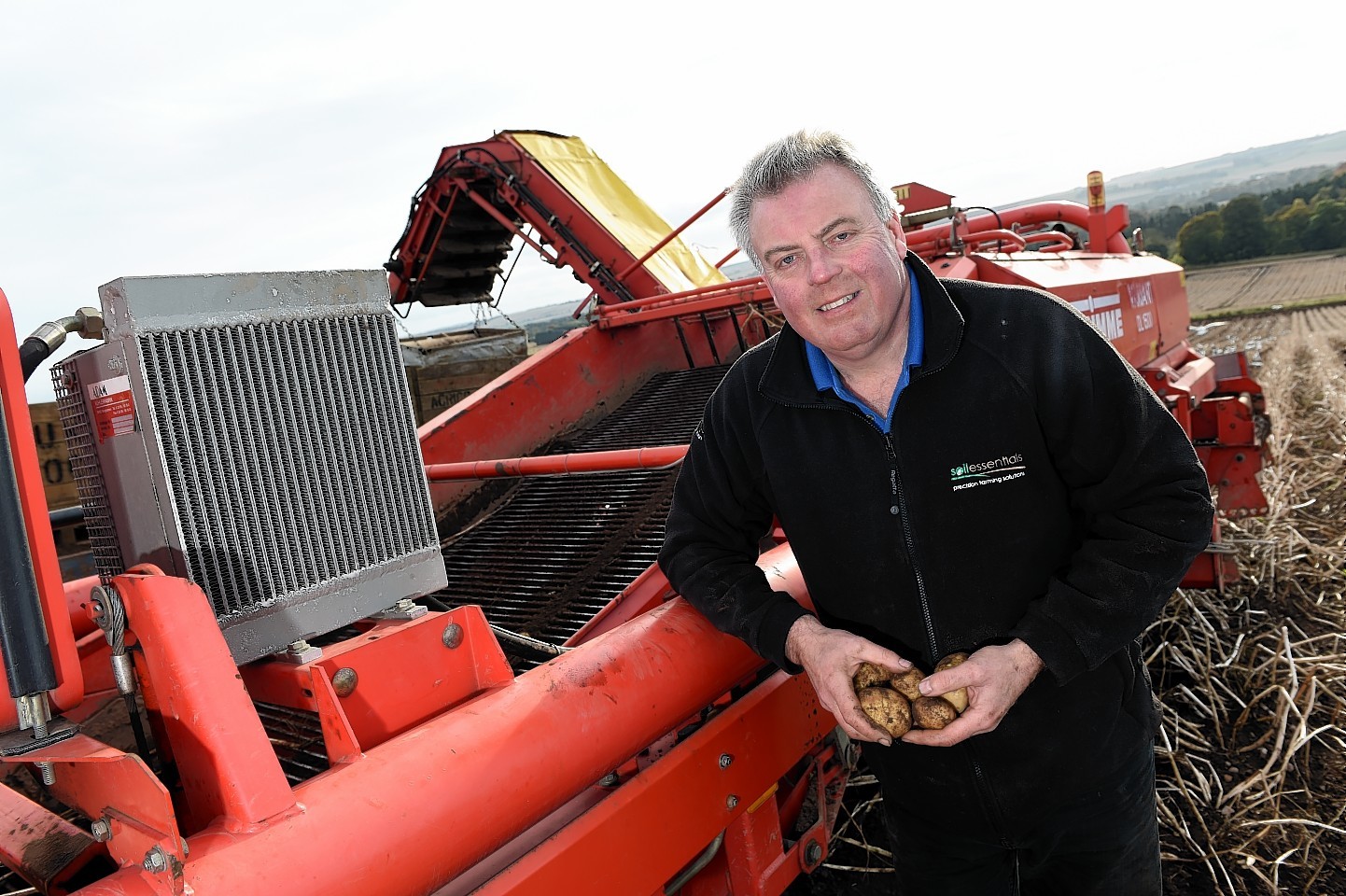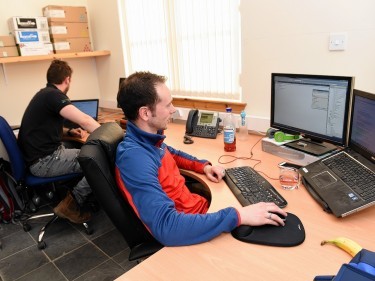Autumn will always be a special time of year for Jim Wilson who farms at Hilton of Fern, near Brechin. For it was while he was sitting on his combine harvester in the autumn of 1996 and looking out over the field, that he came up with the idea for a new business.
Jim, who attended college in Aberdeen, said: “It used to really wind me up that, in the same field, I could be harvesting a fantastic crop while 60ft away in the same row, the crop was terrible. I’d be making money on the good crop and a few minutes later losing it on the bad crop.”
Despite the whole field having had the same treatment there were obvious differences. The question was why? Many questions and conversations later, he introduced GPS linked soil sampling.
“At that point GPS was just becoming affordable for agricultural applications, there was no plug and play system in those days. The first step was to put a yield monitor on the combine then beg, steal and borrow a GPS receiver (GPS was first unveiled in the early 1990s and became the technology trigger which allowed so much to happen). Using the yield maps and taking soil samples I set out to determine what exactly was the cause of the yield limiting factors and more importantly what I could do about it,” said Jim, 54.
By the law of unintended consequences he was able to combine this technology to make it possible to see the variability and begin the process of understanding it and in turn, better manage the land.
“Making yield maps of the cereal crops told us how good the good bits were and how bad the bad bits were so gave us some numbers to go on. By having a map meant it was easy to go back to the bad areas and start doing things to remedy this,” said Jim.
“In my area, for example I discovered there was an area of low PH which we rectified by manually applying lime. That worked out for about 30-40% of the low yielding areas, and I discovered that in general, high-yielding areas tended to have lower P&K, while low-yielding areas had high P&K.
“The natural reaction to poor areas is to stick on more fertiliser, but that would have been the wrong thing to do as you first have to identify why the crop is poor. Now we understand it, it makes perfect sense and we now fix what we can (low pH, compaction, drains, rabbit damage) and then we try and lower the cost of growing the crop on the areas where we can’t increase yield due to the soil type, slope or aspect. Every field is different but mapping means you’re putting the right amount on at the right place.”
A chance meeting at Scottish Agronomy and a shared interest for yield mapping brought Jim and Robert Ramsay together and in the following weeks and months it became clear to them that interest in precision agriculture was increasing and it was apparent there was a real business opportunity in their midst.
It was the Royal Highland Show in June 2000 that acted as the initial launchpad for their newly created precision agriculture company, SoilEssentials, which celebrates its 15th anniversary this year. Both Jim and Robert run their own working farms but have a firm passion for all that is precision. With a heritage in farming practices, the ability to use and test their innovative products in-situ, is still so important.
The firm now employs 18 staff, with the majority based at the head office at the foot of the Angus Glens at Hilton of Fern. This is further supported by an area sales manager in the Borders. As the Trimble® designated authorised dealers for Northern UK, SoilEssentials blend this with a complementary portfolio of products and services of their own.
“It’s taken a few years to get a momentum behind the company as anything related to new technology always takes longer than you think,” said Jim who is married to Gillian. “But today using technology and hi-tech equipment on the farm is becoming normal – it’s the mobile revolution which has driven it.
“The fundamentals of agriculture don’t change. When farming was all manpower and horses, we were much more in tune with where soil textures changed, where crops yielded well and where a particular weed was a problem.
“But with the drive towards ever bigger farms and machines, and the amalgamation of smaller fields into one larger one, the crop and soil variation, although still there, was largely ignored. Now, with precision agriculture, we can get the best of both worlds. We can keep the efficiency of large machines, but manage crops and soils at the appropriate level of detail.”
The company now has three main teams. Agronomy, with soil sampling, area measuring and mapping (EssentialsMap Version 2 has been newly released), and a brand new product – EssentialsAnalysis – where SoilEssentials can create yield maps from historical data to assist growers in improving crop performance, Machine Control – with Trimble® Agriculture kit and SoilEssentials’ complementary products such as EssentialsNet (the largest privately owned RTK correction service in the UK) and EssentialsRootYield (winner of an RHASS Technical Innovation Silver Award this year) and their third division, Software Development – the in-house team of IT professionals taking forward projects to further push the boundaries of possibilities and introduce new platforms to enhance the farmer’s life and their profitability.
“What we look for is a need in the market then try to fill it. We employ software engineers who build cloud-based software. One is EssentialsMap, which allows customers to log on to a website and see maps of their fields, then create application maps. In the not to distant future, farmers, having logged on to a website will be able to use satellite technology from the European Space Agency and Nasa, plus a UAV professional drone, to fly over their fields and zoom in really closely to see what is happening to their crops. This is going to be demonstrated next year before going live in a project funded by the European Space Agency.”
Always ready to challenge themselves, SoilEssentials, as agricultural innovators, will continue to develop and deliver high quality, fit-for-purpose products and services in the field of precision farming. With the industry forever changing and new technologies emerging, it has its eye on the future and will continue with their goal of making life simpler for the farmer. Here’s to the next 15 years.
SoilEssentials will host precision agriculture training days in the near future. Those interested are invited to email details to: enquiries@soilessentials.com
Contact: 01356 650459 www.soilessentials.com/ www.essentialsnet.co.uk

